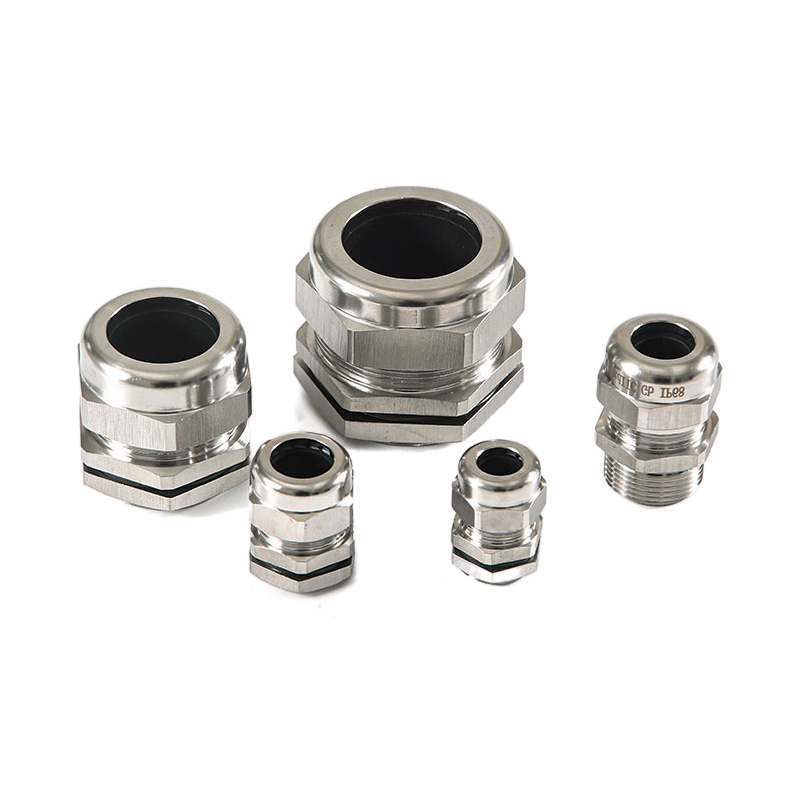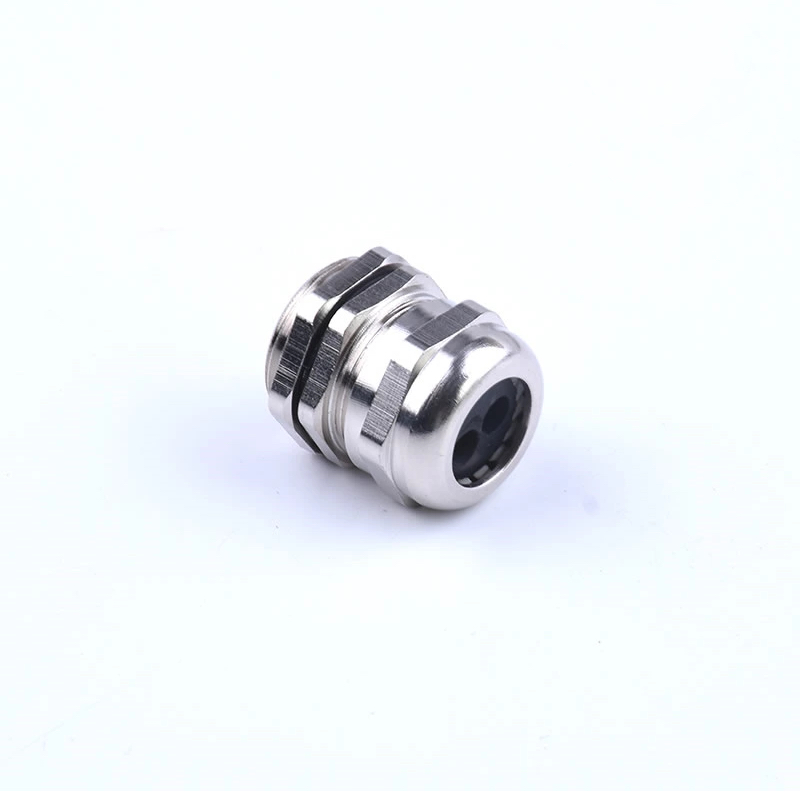When David, a procurement manager from a major automotive manufacturer in Detroit, called me last month, he was frustrated. His team had been using commercial-grade cable glands for their production line, only to face repeated failures in their harsh manufacturing environment. “Samuel,” he said, “we’re losing thousands of dollars in downtime. What’s the real difference between industrial and commercial grade cable glands?”
The key difference lies in durability, environmental resistance, and certification standards. Industrial-grade cable glands are engineered for extreme conditions with superior materials, rigorous testing, and comprehensive certifications, while commercial-grade versions are designed for standard office and light-duty applications.
This distinction isn’t just technical jargon – it’s the difference between smooth operations and costly failures. After helping hundreds of clients like David make the right choice, I’ve seen firsthand how selecting the wrong grade can impact everything from safety compliance to bottom-line profitability. Let me walk you through everything you need to know to make an informed decision.
Table of Contents
- What Defines Industrial Grade Cable Glands?
- What Are Commercial Grade Cable Glands Best For?
- How Do Material Specifications Compare?
- Which Certifications Matter Most?
- When Should You Choose Each Grade?
- FAQ
What Defines Industrial Grade Cable Glands?
Industrial-grade cable glands are the workhorses of demanding environments. These robust components are specifically engineered to withstand extreme temperatures, corrosive chemicals, high vibration, and continuous operation in harsh industrial settings.
Built for Extreme Conditions
Industrial cable glands typically feature:
- Temperature resistance: Operating ranges from -40°C to +200°C
- Chemical resistance: Compatible with oils, acids, and industrial solvents
- Vibration tolerance: Designed to maintain seal integrity under constant mechanical stress
- Pressure ratings: Often rated for high-pressure applications up to 10 bar or more
I remember working with Hassan, who owns a petrochemical facility in Saudi Arabia. His original commercial-grade glands failed within months due to exposure to harsh chemicals and extreme heat. After switching to our industrial-grade stainless steel cable glands with ATEX certification, he hasn’t had a single failure in over two years.
Advanced Sealing Technology
Industrial versions incorporate multiple sealing mechanisms:
- Primary seals: High-grade EPDM or Viton gaskets
- Secondary protection: Metal-to-metal sealing surfaces
- Cable strain relief: Reinforced clamping systems
- Environmental sealing: IP68 or higher ingress protection
The manufacturing process also differs significantly. At Bepto, our industrial-grade cable glands undergo rigorous testing including salt spray tests, thermal cycling, and mechanical stress testing to ensure they meet the demanding requirements of industrial applications.
What Are Commercial Grade Cable Glands Best For?
Commercial-grade cable glands serve a different but equally important purpose. These cost-effective solutions are optimized for standard office buildings, retail spaces, and light industrial applications where environmental conditions are controlled and less demanding.
Designed for Standard Environments
Commercial cable glands excel in:
- Office buildings: HVAC systems, lighting circuits, data centers
- Retail spaces: Security systems, point-of-sale equipment
- Light manufacturing: Assembly operations, packaging facilities
- Residential applications: Home automation, solar installations
Cost-Effective Performance
The key advantages include:
- Lower initial cost: Typically 30-50% less expensive than industrial grade
- Easier installation: Simplified design for faster deployment
- Standard certifications: Basic IP ratings and electrical safety standards
- Wide availability: Common sizes readily available from multiple suppliers
Commercial-grade cable glands typically use standard materials like nylon PA66 or basic brass alloys, with operating temperatures ranging from -20°C to +80°C – perfectly adequate for controlled environments but insufficient for industrial applications.
How Do Material Specifications Compare?
The material differences between industrial and commercial cable glands are substantial and directly impact performance and longevity.
Industrial Grade Materials
| Component | Industrial Grade | Performance Benefits |
|---|---|---|
| Body Material | 316L Stainless Steel1, Brass CW617N | Superior corrosion resistance, high strength |
| Sealing Elements | Viton, EPDM, NBR | Chemical compatibility, temperature stability |
| Locking Mechanism | Hardened steel threads | Prevents loosening under vibration |
| Cable Gripping | Reinforced elastomer | Maintains seal under cable movement |
Commercial Grade Materials
| Component | Commercial Grade | Typical Applications |
|---|---|---|
| Body Material | Nylon PA66, Standard Brass | Indoor environments, cost-sensitive projects |
| Sealing Elements | Standard rubber compounds | Basic weather protection |
| Locking Mechanism | Standard threads | Low-vibration environments |
| Cable Gripping | Basic elastomer | Static installations |
Real-World Impact
The material differences translate to measurable performance gaps:
- Lifespan: Industrial grade typically lasts 15-20 years vs. 5-8 years for commercial
- Maintenance: Industrial requires minimal maintenance vs. regular inspection for commercial
- Failure rates: Industrial grade shows <0.1% failure rates vs. 2-3% for commercial in demanding applications
Which Certifications Matter Most?
Certification requirements vary dramatically between industrial and commercial applications, and understanding these differences is crucial for compliance and safety.
Industrial Certifications
Essential for industrial applications:
- ATEX/IECEx: Explosion-proof ratings for hazardous areas
- UL/CSA: North American safety standards
- CE Marking: European conformity requirements
- IP68/IP69K2: Maximum ingress protection
- NEMA 4X/6P: Corrosion resistance and submersion protection
Commercial Certifications
Typically sufficient for commercial use:
- IP65/IP66: Standard weather protection
- CE Marking: Basic European compliance
- RoHS: Environmental compliance
- UL Listed: Basic electrical safety
Compliance Consequences
Choosing the wrong certification level can result in:
- Safety violations: Potential accidents in hazardous environments
- Insurance issues: Coverage denial for non-compliant installations
- Regulatory fines: Penalties for improper equipment selection
- Operational shutdowns: Forced closures until compliance is achieved
When Should You Choose Each Grade?
The decision between industrial and commercial grade cable glands should be based on a careful assessment of your specific application requirements.
Choose Industrial Grade When:
Environmental factors require it:
- Operating temperatures below -20°C or above +80°C
- Exposure to chemicals, oils, or corrosive substances
- High vibration or mechanical stress environments
- Outdoor installations with extreme weather exposure
Safety and compliance demand it:
- Hazardous area classifications (Zone 1, Zone 2, Class I Div 1/2)
- Critical infrastructure applications
- High-reliability requirements with minimal maintenance windows
- Insurance or regulatory mandates for industrial-grade equipment
Long-term economics favor it:
- High replacement costs due to difficult access
- Downtime costs exceed initial premium
- Extended warranty requirements
- Asset life cycles exceeding 10 years
Choose Commercial Grade When:
Standard conditions apply:
- Controlled indoor environments
- Minimal temperature variations
- Low vibration applications
- Easy access for maintenance and replacement
Budget constraints exist:
- Cost-sensitive projects with tight margins
- Temporary or short-term installations
- Non-critical applications where failures are acceptable
- High-volume applications with standardized requirements
Making the Right Choice
Consider this decision framework:
- Assess environmental conditions – temperature, chemicals, vibration
- Evaluate safety requirements – hazardous area classifications, codes
- Calculate total cost of ownership – initial cost plus maintenance and replacement
- Consider operational impact – downtime costs, accessibility, criticality
Conclusion
The choice between industrial and commercial grade cable glands isn’t just about specifications – it’s about matching the right solution to your specific needs. Industrial grade offers superior durability, comprehensive certifications, and long-term reliability for demanding environments, while commercial grade provides cost-effective performance for standard applications. As I always tell my clients, the best cable gland is the one that delivers reliable performance at the right price point for your specific application. Take time to assess your requirements carefully, and don’t hesitate to consult with experts who can guide you toward the optimal solution.
FAQ
Q: Can I use commercial grade cable glands in industrial applications to save money?
A: No, this is not recommended and can be dangerous. Commercial grade cable glands lack the material properties, certifications, and performance characteristics required for industrial environments. Using them in demanding applications can lead to failures, safety hazards, and compliance violations that far exceed any initial cost savings.
Q: How much more expensive are industrial grade cable glands compared to commercial grade?
A: Industrial grade cable glands typically cost 30-70% more than commercial grade, depending on materials and certifications. However, when you factor in longer lifespan (15-20 years vs. 5-8 years), reduced maintenance, and lower failure rates, the total cost of ownership often favors industrial grade for demanding applications.
Q: What IP rating should I choose for outdoor industrial applications?
A: For outdoor industrial applications, choose IP68 or IP69K ratings. IP68 provides protection against continuous submersion, while IP69K adds high-pressure, high-temperature wash-down protection. These ratings ensure reliable performance in harsh weather conditions and industrial cleaning processes.
Q: Do industrial grade cable glands require special installation procedures?
A: Yes, industrial grade cable glands often require more precise installation procedures, including proper torque specifications, cable preparation, and sealing compound application. Always follow manufacturer installation guidelines and consider professional installation for critical applications to ensure optimal performance and warranty compliance.
Q: How do I determine if my application requires ATEX certified cable glands?
A: ATEX certification is required in European hazardous areas where explosive atmospheres may occur due to gases, vapors, or dust. Check your facility’s hazardous area classification (Zone 0, 1, or 2 for gases; Zone 20, 21, or 22 for dust). If your installation is in any classified zone, ATEX certified cable glands are mandatory for legal compliance and safety.





